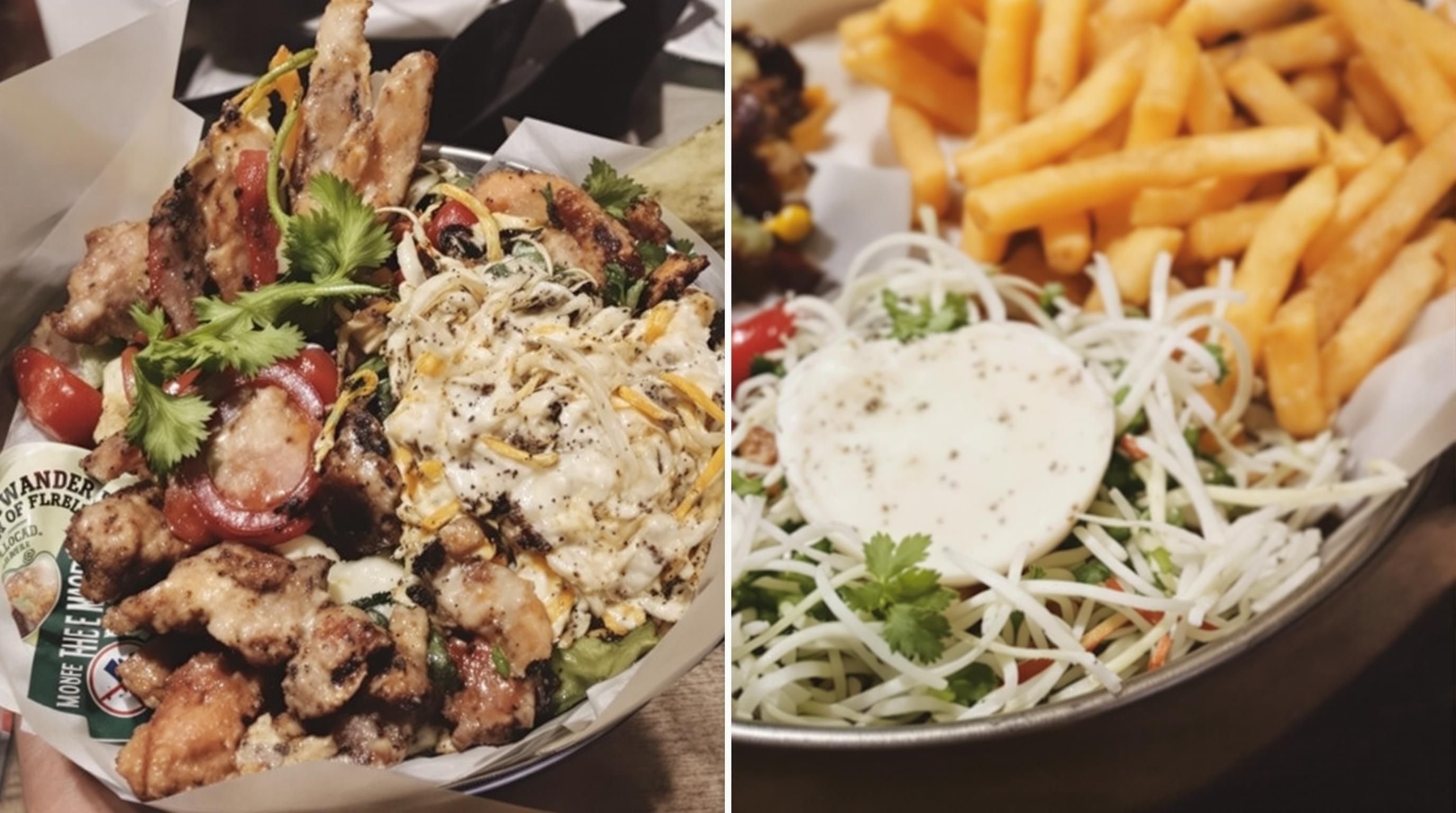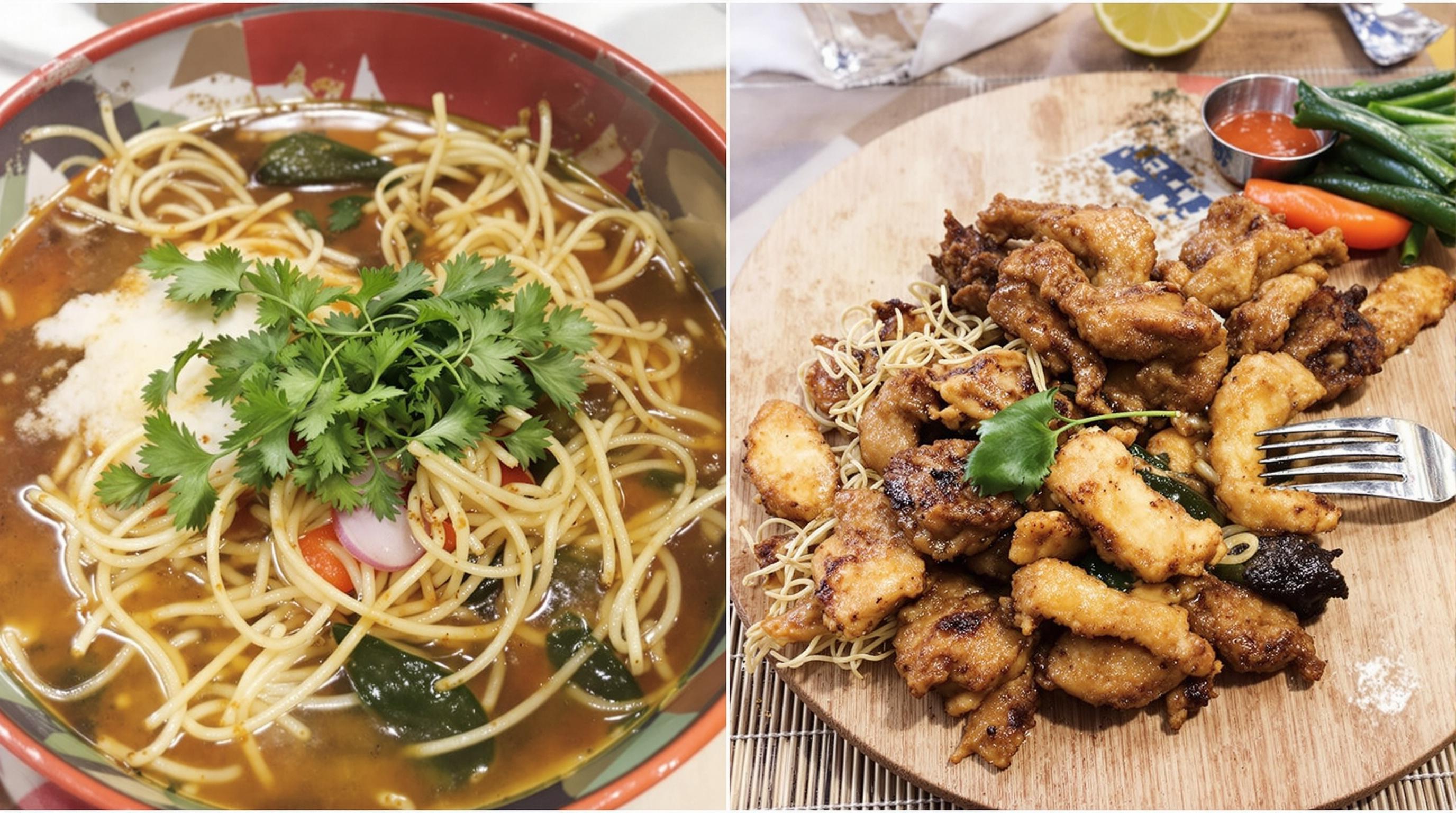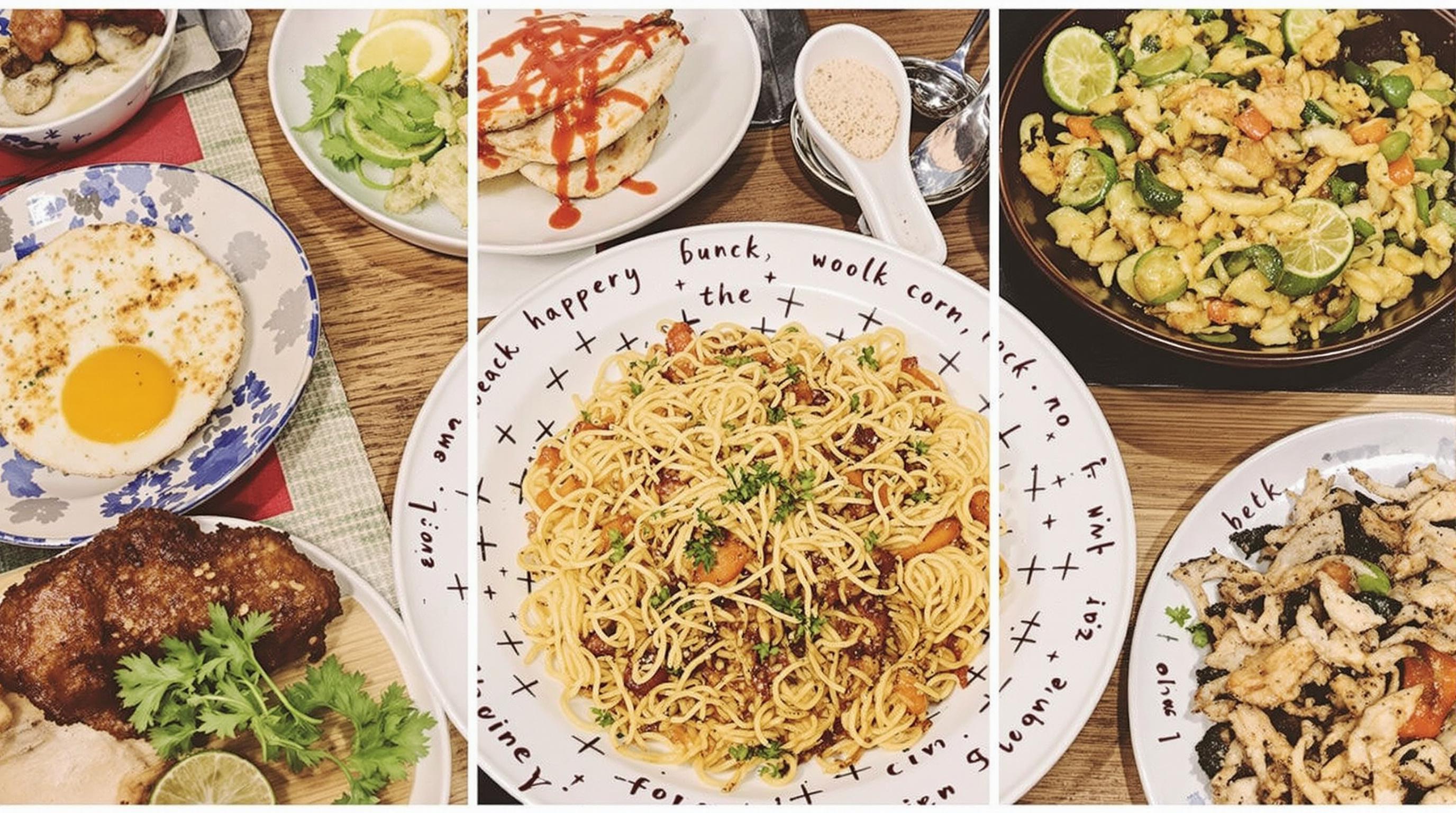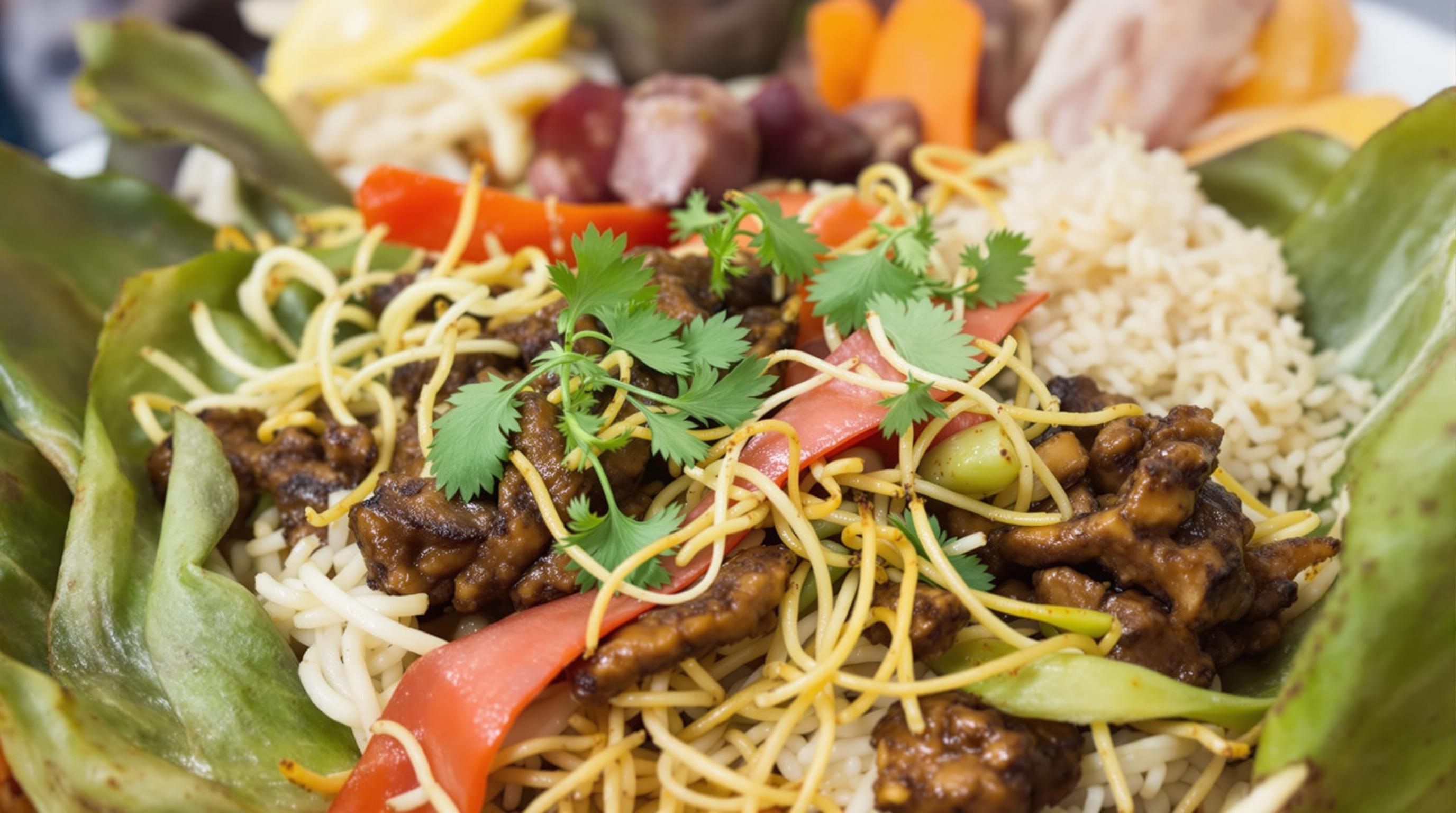Related Articles
- Culinary Cartography: The Unexpected Foods Shaping Local Identity in Urban Landscapes
- Flavors of the Forgotten: Rediscovering Culinary Traditions in the Shadows of Modern Food Trends
- Palate Pilgrimage: The Unlikely Fusion of Ancient Rituals and Modern Local Fare
- Ecosystem Engineers: Celebrating the Role of Nature-Based Solutions in Transforming Eco-Travel Experiences
- Ghost Towns and Green Trails: Unearthing Sustainable Journeys Through Forgotten Landscapes
- Hidden Footprints: Decoding the Carbon Footprint of Digital Nomadism in Edging Towards Sustainable Getaways
9 Curious Local Flavors That Highlight Unique Culinary Traditions and Invite You to Savor the Stories Behind Every Bite
9 Curious Local Flavors That Highlight Unique Culinary Traditions and Invite You to Savor the Stories Behind Every Bite
9 Curious Local Flavors That Highlight Unique Culinary Traditions
1. Poutine: A Canadian Comfort Food
Poutine, a heavenly concoction of fries, cheese curds, and gravy, originated from rural Quebec in the late 1950s. This dish encapsulates the essence of Canadian comfort food, serving as a warm embrace on a cold winter's day. Not only does it offer a delightful contrast of textures, but it also evokes a sense of nostalgia and community, as many families have their preferred local joints for this indulgent meal.
There are numerous variations of poutine; some incorporate toppings like pulled pork or sautéed mushrooms, giving it a personal twist. Each region up North has its take, showcasing local ingredients. For example, in Montreal, you can find poutine loaded with spicy sausage, while in Newfoundland, you might encounter a fish-based variant.
This dish is not just a meal; it's a conversation starter among Canadians, often evoking fond memories and personal stories. With annual poutine festivals across Canada further celebrating this dish, one can see how food intertwines with cultural identity.
2. Kimchi: The Heart of Korean Cuisine
Kimchi is more than just spicy fermented vegetables; it’s a cornerstone of Korean identity and tradition. Produced using various techniques passed down through generations, this side dish blends ingredients like napa cabbage, radish, and chili pepper, each family adding its secret blend of spices. The preparation process, known as "Kimjang," is so significant that UNESCO inscribed it in the Representative List of the Intangible Cultural Heritage of Humanity.
Kimchi showcases the balance between flavors, including spicy, sweet, and umami, while also carrying health benefits due to live probiotics. Koreans consume it daily, incorporating it into various meals including stews, fried rice, and pancakes, proving its versatility in the kitchen. The ritual of gathering to prepare kimchi during the winter months binds families together and fosters community, as neighbors exchange tips and ingredients.
Through the stories tied to each recipe, kimchi not only represents a food tradition but also serves as a symbol of resilience, embodying Korea’s tumultuous history and triumphs, making every bite a testament to Korean spirit.
3. Mole: A Mexican Masterpiece
Mole represents one of Mexico’s most complex and revered culinary achievements. This rich sauce, combining chocolate with spices, nuts, and fruits, has deep historical roots that date back to pre-Hispanic times. Each state in Mexico boasts its unique variety of mole, providing a tapestry of flavors and aromas that underline regional traditions and the creative spirit of local chefs.
The process of making mole can take days, often involving toasting each ingredient and cooking them to perfection. These intricate preparations are often passed through generations, connecting families with their past. Traditionally served over chicken or turkey, mole has even made its way into modern gastronomy, finding its spot as a gourmet dish in upscale restaurants as well.
Beyond its culinary artistry, mole serves as a cultural representation of the fusion between indigenous and European flavors, symbolizing the adaptability and evolution of Mexican cuisine through history. Each spoonful carries a story, inviting diners to appreciate not just the flavors but the significant cultural narratives behind them.
4. Haggis: The Heart of Scottish Tradition
Haggis, often considered Scotland's national dish, is a savory pudding made from sheep's heart, liver, and lungs, traditionally mixed with oats and spices. Though it may raise eyebrows initially, this dish has deep historical roots, having been a practical solution for utilizing the entire animal. Haggis is both celebrated and scrutinized, embodying much of what it means to appreciate Scottish heritage.
This dish is typically served with "neeps and tatties" (turnips and potatoes) and often associated with the poetry of Robert Burns, whose works celebrate the dish in “Address to a Haggis.” This cultural connection transformed haggis from a mere meal to a symbol of national pride and an essential component of Burns Night celebrations.
When you fork into haggis, you don’t just engage with food; you partake in a rich tradition that connects generations. Replete with spices and flavors, it is a dish that invites eaters to relish the tales of Scotland's pastoral heritage.
5. Sushi: Japan’s Culinary Artistry
Sushi is an art form, rooted in Japan’s coastal culture but now representing global cuisine. This intricate dish, where high-quality fish is paired with vinegared rice and often served with wasabi and soy sauce, signifies seasons and regions, as fish are selected based on freshness. Sushi-making itself is a meticulous craft that requires years of training, showcasing the dedication of Japanese culinary heritage.
Despite its popularity worldwide, sushi has its local twists. In Osaka, you'll find "narezushi," a fermented version, while in Tokyo, "nigiri" rules the scene. Cities globally have embraced sushi, aweing food enthusiasts with endless innovations, from vegetarian sushi to deep-fried varieties.
Engaging in the sushi experience offers more than just a taste. It invites diners into a cultural exploration, where every piece of sushi holds an intricate story of its origins, preparation, and the artistry behind its making, inviting a deeper appreciation for this Japanese staple.
6. Dolma: A Mediterranean Delight
Dolma, which translates to "stuffed," is a cherished dish across several Mediterranean nations, including Turkey, Greece, and Lebanon. Typically consisting of grape leaves or vegetables like peppers filled with rice, herbs, and spices, dolma showcases the agricultural bounty of the region. The techniques of making dolma vary slightly, reflecting local herbs and spices, thus creating distinctive regional flavors.
This dish is often a focal point during family gatherings, evoking warmth and community. The act of preparing dolma is more than mere cooking—it’s a shared activity that has been practiced through generations, connecting families to their roots and cultural histories.
Each roll of dolma embodies stories, inviting eaters to savor not just the flavor but also the communal spirit of Mediterranean cultures. From Egypt to Greece, dolma is a unique representative of cultural exchange and shared love for culinary artistry.
7. Injera: The Unique Bread of Ethiopia
Injera is not just a meal; it’s a dining experience, integral to Ethiopian cuisine. This sourdough flatbread, made from teff flour, has a slightly spongy texture, perfect for scooping up delicious stews called "wat." Beyond its culinary role, injera is a cultural symbol of community and hospitality in Ethiopia, where meals are traditionally consumed by hand from a communal plate.
The fermentation process that gives injera its distinct flavor is steeped in tradition, often involving family secrets and time-tested practices. Injera serves as both plate and utensil, showcasing the Ethiopian philosophy of eating together and sharing. People often come together to enjoy a lavish spread of colorfully spiced dishes served atop a large injera.
Eating injera invites camaraderie, telling a story of togetherness and the unique flavors distinct to Ethiopian spices and culinary techniques. Each meal is a shared experience, connecting individuals to their culture and one another through food.
8. Biryani: A Royal Indian Dish
Biryani is a fragrant rice dish infused with spices and layered with marinated meat or vegetables, believed to have been brought to India by Persian travelers. This royal dish has various regional versions across India, such as Hyderabadi and Lucknowi biryani, each boasting distinct flavors and techniques shaped by local ingredients and cooking methods.
The making of biryani involves a meticulous layering process, where partially cooked rice is layered with marinated proteins and slow-cooked to perfection. The creation of biryani is often a communal affair, bringing families together, celebrating both the flavors and the bonds that food creates.
Every plate of biryani has tales woven into its preparation, representing a fusion of cultures, and a celebration of history. Savoring biryani is akin to tasting a story, as each ingredient contributes to a rich narrative that spans generations.
9. Churrasco: The Celebration of Brazilian Barbecue
Churrasco is a celebration of meat in all its forms, representing the vibrant culture of Brazil. This traditional barbecue method involves grilling large cuts of meat over an open flame, seasoned simply with salt, allowing the natural flavors to shine. This practice reflects the communal spirit of Brazilian culture, as gatherings often revolve around food, music, and joy.
Culinary traditions vary across regions, with each area offering its unique twist on cuts of meat and grilling techniques. In Southern Brazil, for instance, the "rodizio" style serves various meats, while in other areas, regional spices or marinades come into play, demonstrating the diversity within this feast.
Participating in a churrasco gathering is not just about the food; it's about the rich tapestry of stories shared between friends and family. It embodies the Brazilian ethos of celebrating life, friendship, and the sheer pleasure derived from good food, making every bite a taste of community and history.




